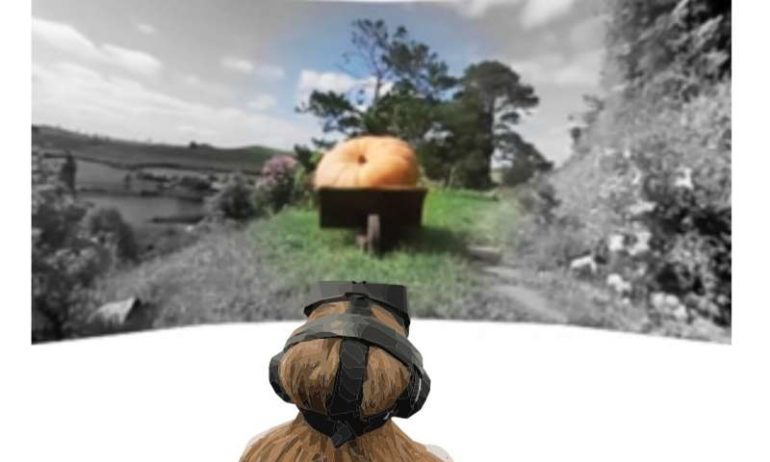Color awareness has long been a puzzle for researchers in neuroscience and psychology, who debate over how much color observers really perceive. A study from Dartmouth in collaboration with Amherst College finds that people are aware of surprisingly limited color in their peripheral vision; much of our sense of a colorful visual world is likely constructed by our brain. The findings are published in the Proceedings of the National Academy of Sciences .
To test people’s visual awareness of color during naturalistic viewing, the researchers used head-mounted virtual reality displays installed with eye-trackers to immerse participants in a 360-degree real-world environment. The virtual environments included tours of historic sites, a street dance performance, a symphony rehearsal and more, where observers could explore their surroundings simply by turning their heads. With the eye-tracking tool, researchers knew exactly where an observer was looking at all times in the scene and could make systematic changes to the visual environment so that only the areas where the person was looking were in color. The rest of the scene in the periphery was desaturated so that it had no color and was just in black and white. After a series of trials, observers were asked a series of questions to gauge if they noticed the lack of color in their periphery. A supplemental video from the study illustrates how the peripheral color was removed from various scenes.
In your visual field, your periphery extends approximately 210 degrees,…


